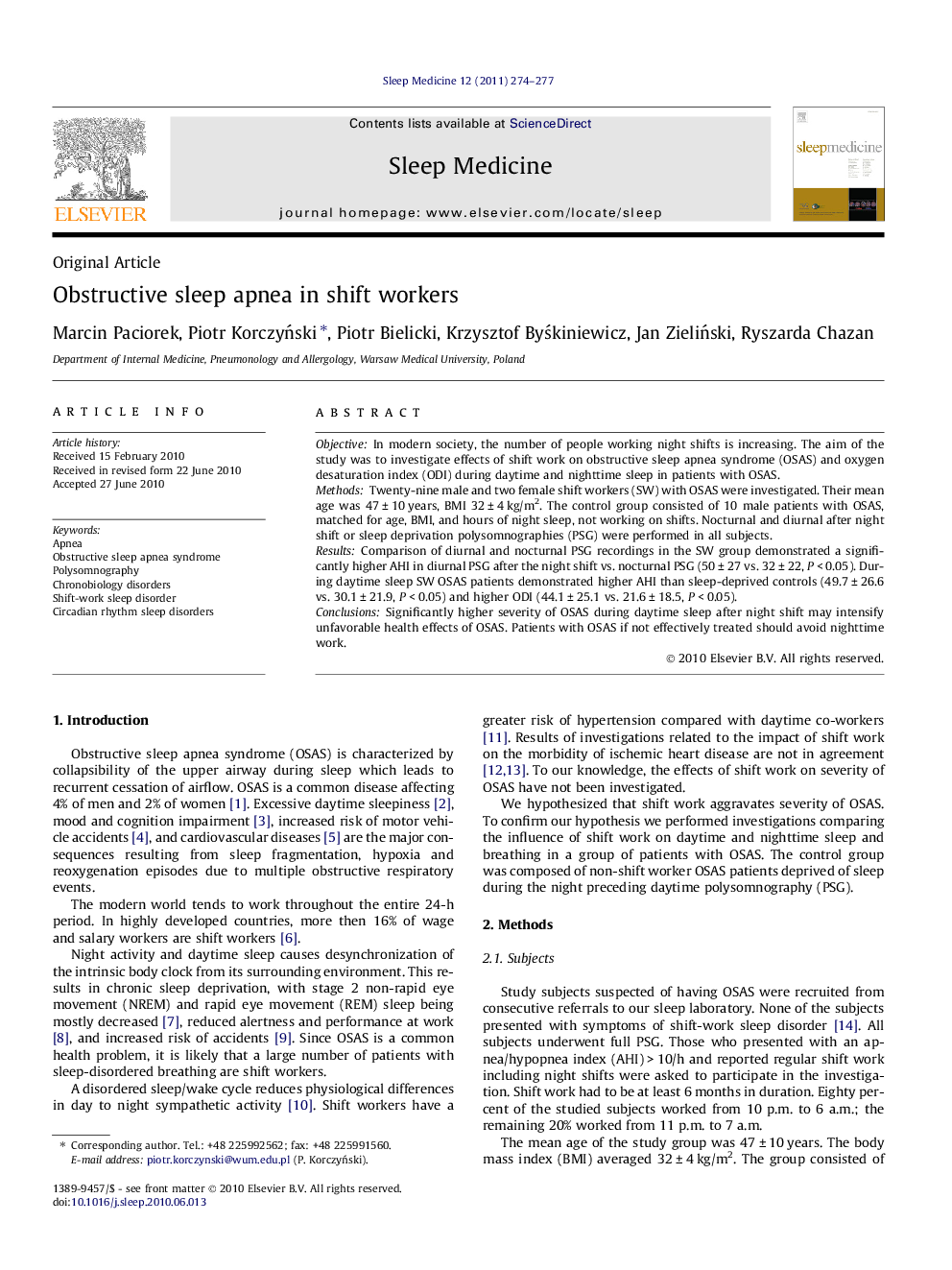| Article ID | Journal | Published Year | Pages | File Type |
|---|---|---|---|---|
| 3176379 | Sleep Medicine | 2011 | 4 Pages |
ObjectiveIn modern society, the number of people working night shifts is increasing. The aim of the study was to investigate effects of shift work on obstructive sleep apnea syndrome (OSAS) and oxygen desaturation index (ODI) during daytime and nighttime sleep in patients with OSAS.MethodsTwenty-nine male and two female shift workers (SW) with OSAS were investigated. Their mean age was 47 ± 10 years, BMI 32 ± 4 kg/m2. The control group consisted of 10 male patients with OSAS, matched for age, BMI, and hours of night sleep, not working on shifts. Nocturnal and diurnal after night shift or sleep deprivation polysomnographies (PSG) were performed in all subjects.ResultsComparison of diurnal and nocturnal PSG recordings in the SW group demonstrated a significantly higher AHI in diurnal PSG after the night shift vs. nocturnal PSG (50 ± 27 vs. 32 ± 22, P < 0.05). During daytime sleep SW OSAS patients demonstrated higher AHI than sleep-deprived controls (49.7 ± 26.6 vs. 30.1 ± 21.9, P < 0.05) and higher ODI (44.1 ± 25.1 vs. 21.6 ± 18.5, P < 0.05).ConclusionsSignificantly higher severity of OSAS during daytime sleep after night shift may intensify unfavorable health effects of OSAS. Patients with OSAS if not effectively treated should avoid nighttime work.
